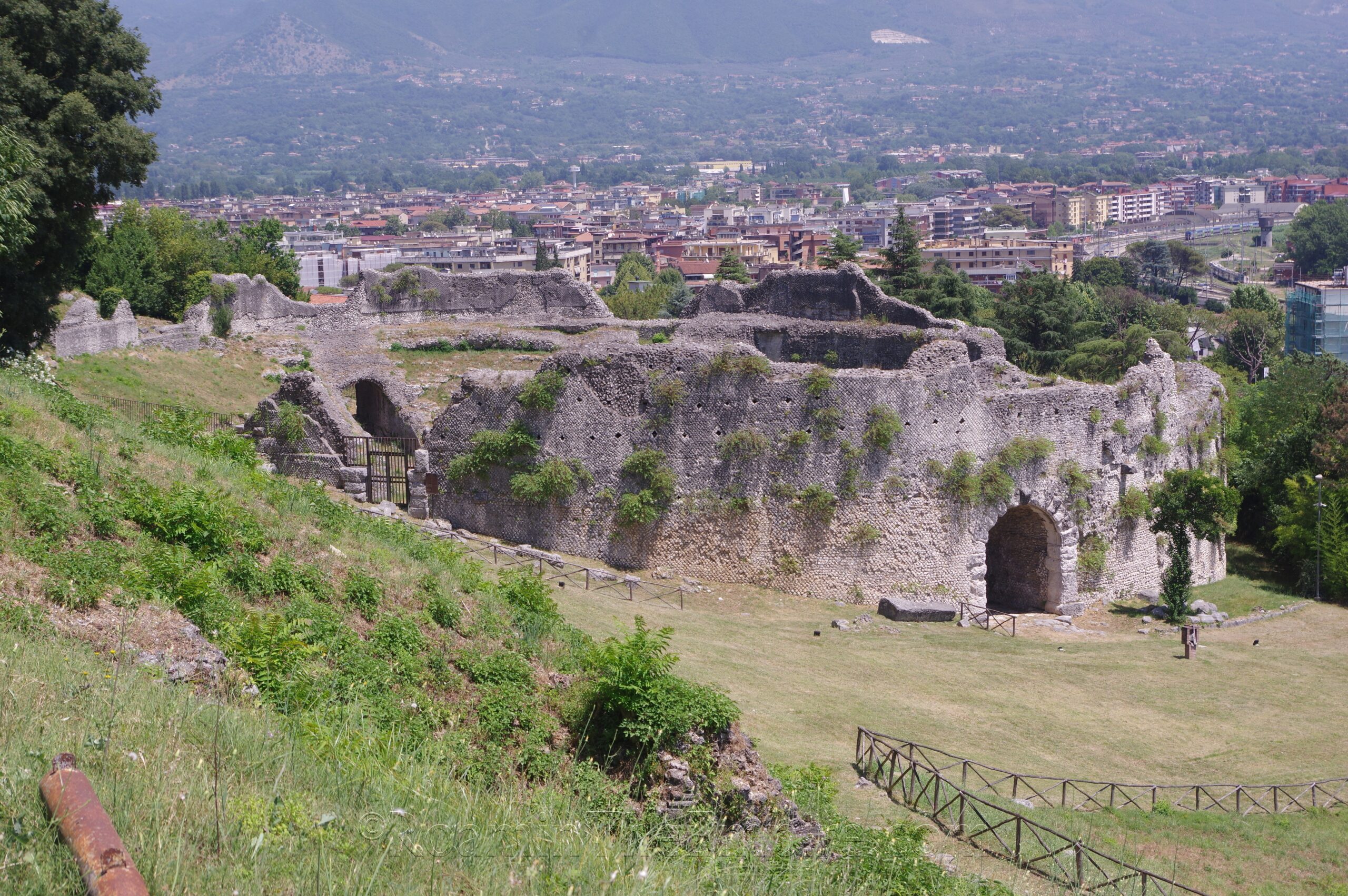
Most Recent Visit: July 2023
Located about 120 kilometers southeast of Rome at the foot of Monte Cassino, site of the famous battle of the Second World War, are the remains of the Roman settlement of Casinum. The settlement appears to have been founded by an Oscan group, perhaps the Sidicini, sometime prior to the 6th century BCE. Varro reports that the name of Casinum is derived from the Oscan for ‘old forum’. In fact, he claims that in the 1st century BCE, it was still referred to by some Romans as forum vetus. The settlement occupied a strategically important position at the intersection of the valley of the Liris (modern Liri) and the valley of Latium. Both features carried important trade routes through the region.
The Volsci were in control of Casinum by the 6th century BCE and seem to have held it until sometime in the 4th century BCE. The Samnites were frequently in conflict with their neighbors through the 4th century BCE, including the Romans. Though there is no specific mention of when the Samnites took Casinum from the Volsci, who were also frequently in conflict with the Romans, it is generally accepted that it was in turn taken by Rome from the Samnites. Once again, the exact point at which Casinum was taken by Rome is unclear, but a colony was sent there in 312 BCE, so it had fallen under Roman hegemony by that point. That same year, construction was started on the Via Latina, which would pass through the city.
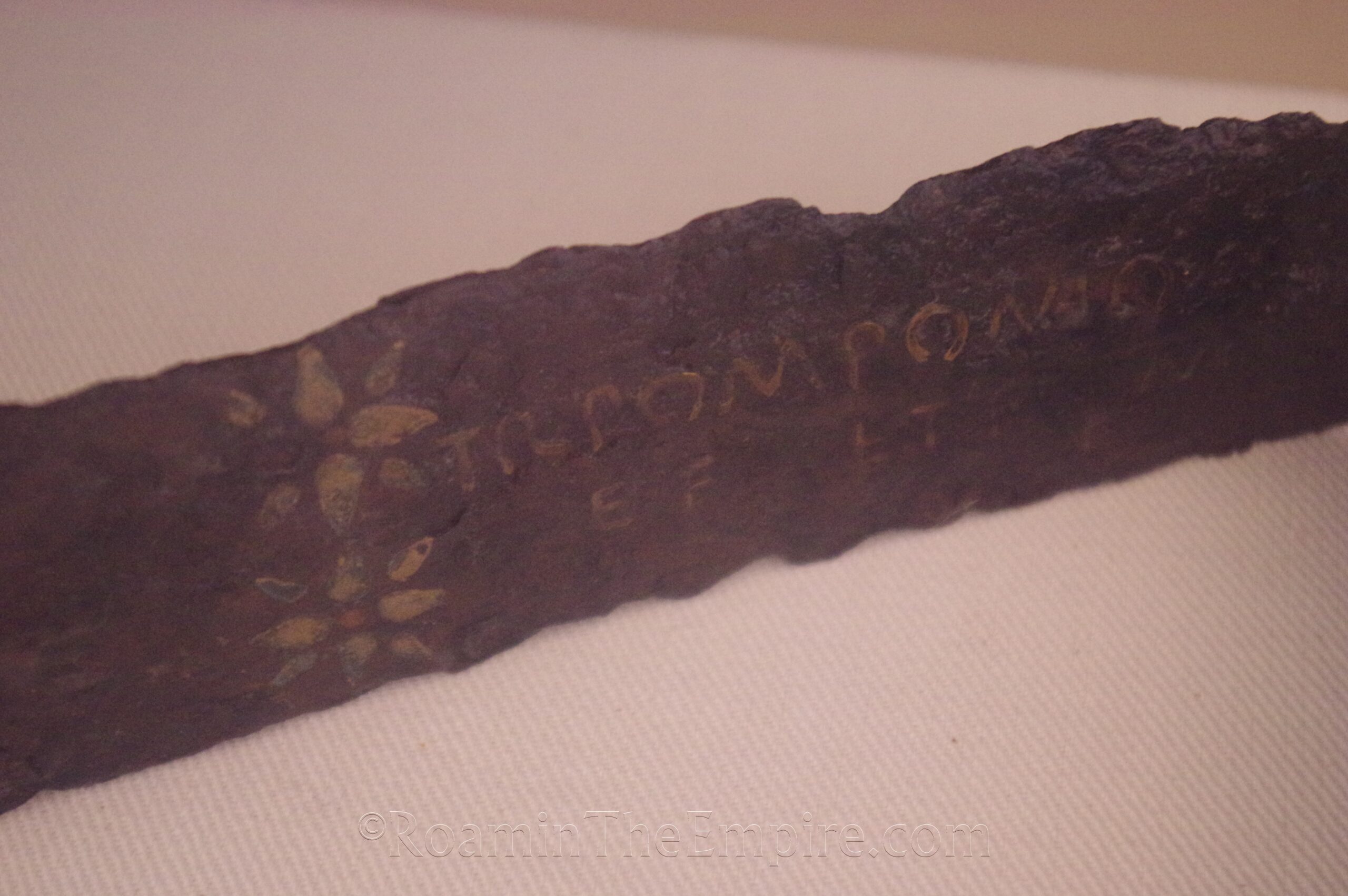
Casinum was noted by Strabo as being the last city of Latium, as the border between Latium and Campania was located just beyond the city. During the Second Punic War, Casinum remained loyal to Rome during Hannibal’s campaigns through Italy. The strategic location of the city made it a target periodically during the war. One episode near the beginning of the war around 216 BCE saw Hannibal attempt to occupy the area of Casinum in order to prevent Roman reinforcements from being able to move south and aid allied cities, but was mistakenly taken to Casilinum instead. The city was later besieged by Hannibal in 211 BCE and the countryside was laid waste by the Carthaginians.

In the middle of the 1st century BCE, Varro maintained a villa near Casinum that housed his famous aviary, the ornithon, which he describes in De Re Rustica. He also notes the fertile surrounding land that was particularly well suited for growing olives. After Caesar’s death, Marcus Antonius had Varro proscribed and the villa was confiscated. During the second triumvirate, a military colony was established at Casinum. Little is known about the city in the imperial period, as it is largely absent from the historical record, but it maintained a relative level of prosperity. In the 6th century CE, however, it was sacked and mostly destroyed by the Lombards.
Getting There: The easiest starting point to get to modern Cassino via public transport is from Rome itself. There are fairly frequent departures from Rome Termini. Trips range from about an hour and a half to two and a half hours depending on the train. Most departures are currently 8.40 Euros. The return frequency, journey time, and prices are more or less the same. The train station is not terribly far from the main archaeological area, about 1.7 kilometers walking, though there is a decent uphill portion. Ample parking is also available at the archaeological for those with private transportation; Cassino is about an hour from Naples and an hour and 45 minutes from Rome by car.
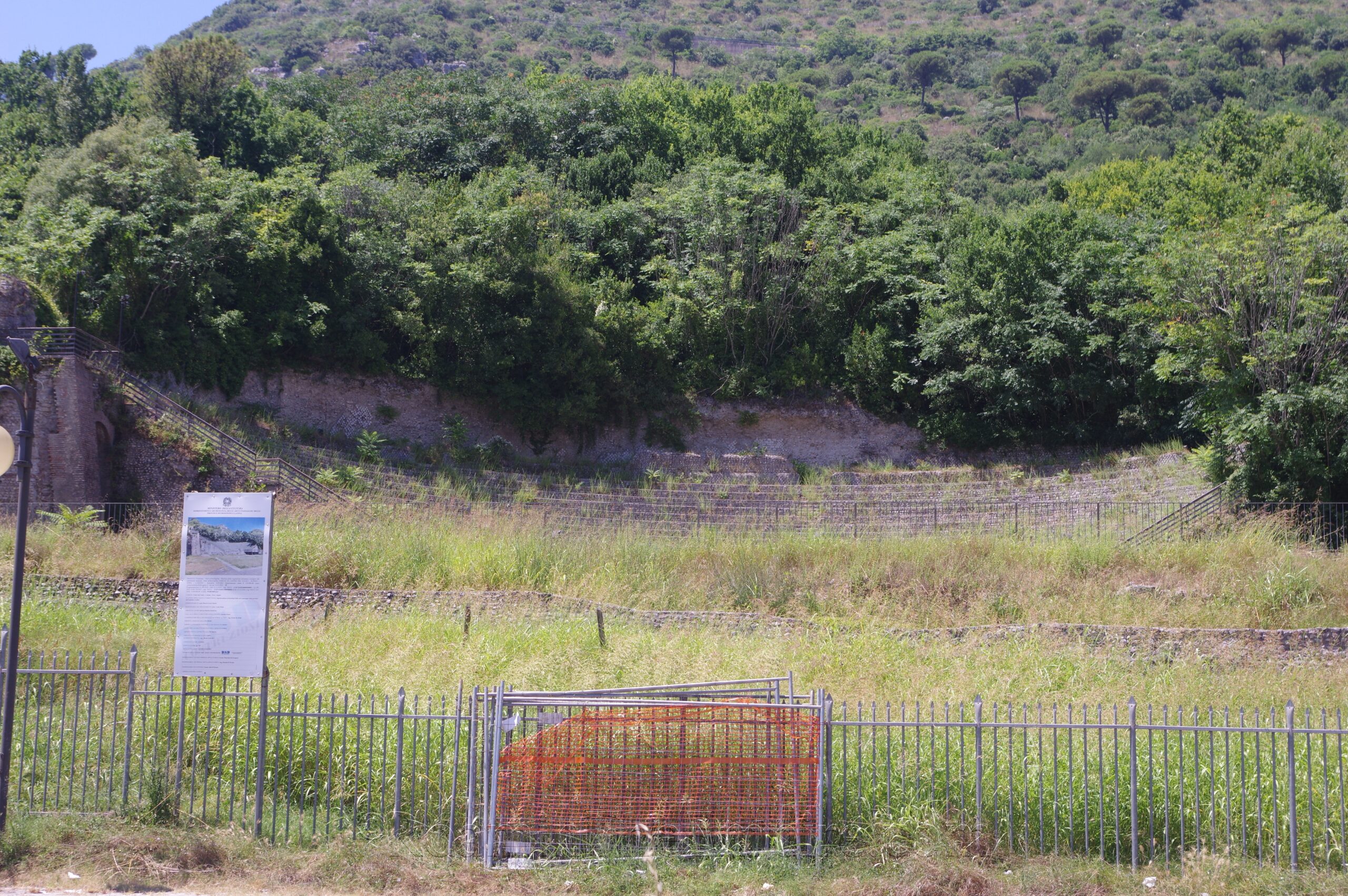
Most of the remains of ancient Casinum are contained within the archaeological park attached to the Museo Archeologico Nazionale G. Carettoni, with a couple exceptions. The first is the ancient theater, which is adjacent to the museum and archaeological area, but is separate and not currently accessible. The theater was likely built early in the reign of Augustus. An inscription attributes a renovation of the theater in the second half of the 1st century CE to Ummidia Quadratilla, whose father was responsible for the original construction of the theater. The theater is somewhat visible from the parking lot, it’s not a great view. Performances are supposedly conducted here in the summers, but it was quite overgrown and didn’t look like it had been used for those purposes in a while. Some remains of a Roman road are visible at points running south of the museum
There is a nymphaeum a little bit down the road from the theater, but there is no access and it was heavily overgrown and nothing was visible from the public roads. Monte Cassino was the location of the pre-Roman city as well as the acropolis of the Roman city. The Abbazia di Montecassino was built on the spot of a temple dedicated to Jupiter. There are supposedly remains of retaining walls located on the south and eastern sides of the abbey, but those areas of the abbey are not accessible when visiting. I did find one Roman sarcophagus on display there, and supposedly there are also other inscriptions reused in the abbey, but I did not see any other spolia. A castle about midway up the mountain, Rocca Janula, was also apparently named due to the presence of a temple dedicated to Janus there in antiquity. There doesn’t seem to be anything left of the temple, and the castle itself is privately owned and not accessible anyway.
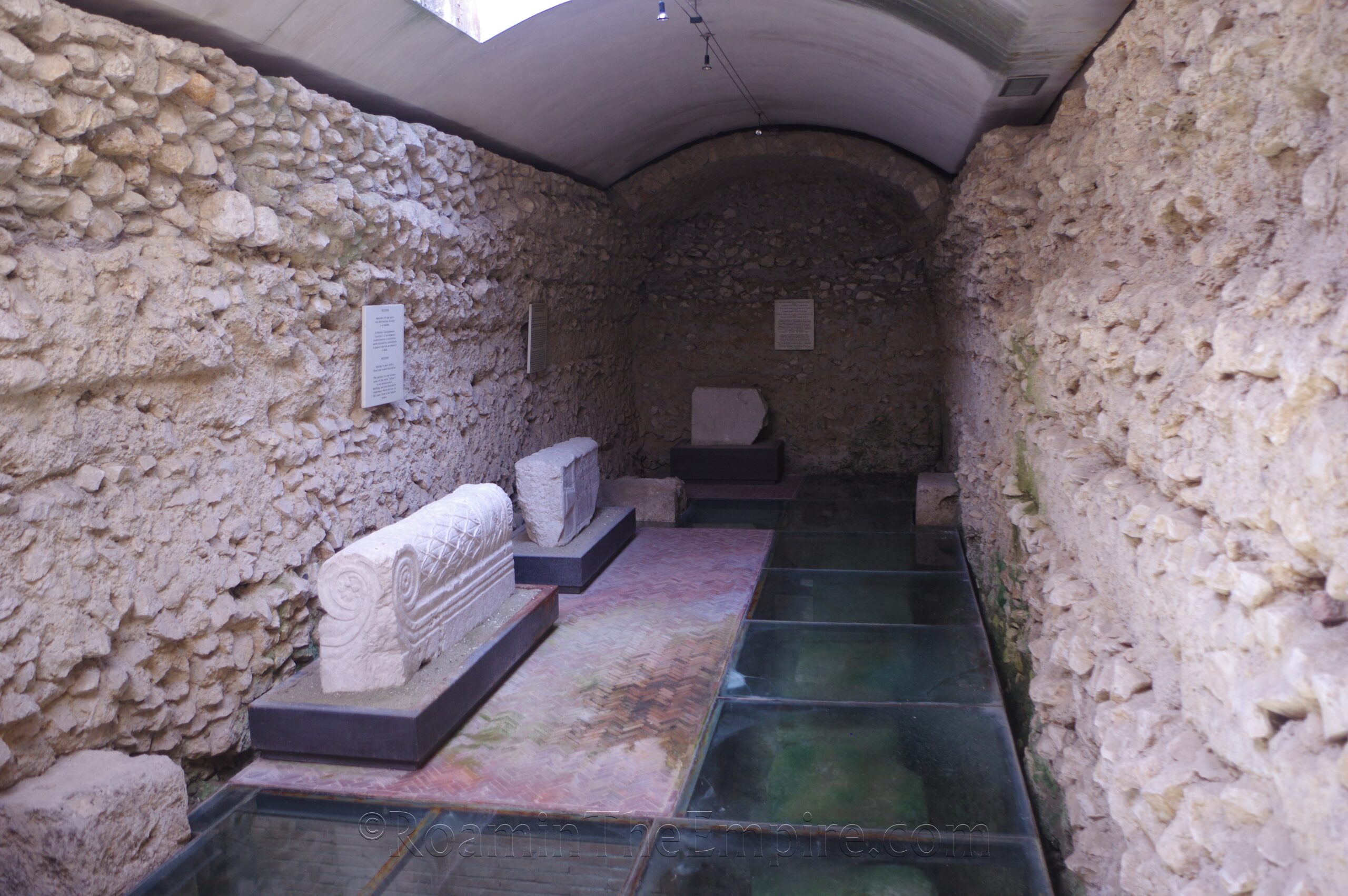
The archaeological area and the Museo Archeologico Nazionale Gianfilippo Carettoni are effectively a single entry. They are open daily (except for Mondays, on which they are closed) during the summer from 8:30 to 19:30. In the winter, the archaeological site closes at 16:00. Admission is 5 Euros for both the museum and site. There is also a combination ticket that includes entrance to Minturnae for 8 Euros, which is valid for 30 days.
As always, I visited the archaeological area first. Heading down from the ticket window toward the archaeological area, there is first a small lapidary collection displayed in the remains of an ancient construction of some sort. Given the nature of the topography in this part of the ancient city, as it is essentially built on the lower slope of the mountain, it would appear to be some sort of storage (water or otherwise) built out of the necessary construction to level off land in order to build flat surfaces. The floor has some glass panels that allow visibility beneath the modern floor. There are about a dozen inscriptions; a lot of funerary inscriptions found along the Via Latina as well as an honorary inscription to Caracalla and some architectural elements.
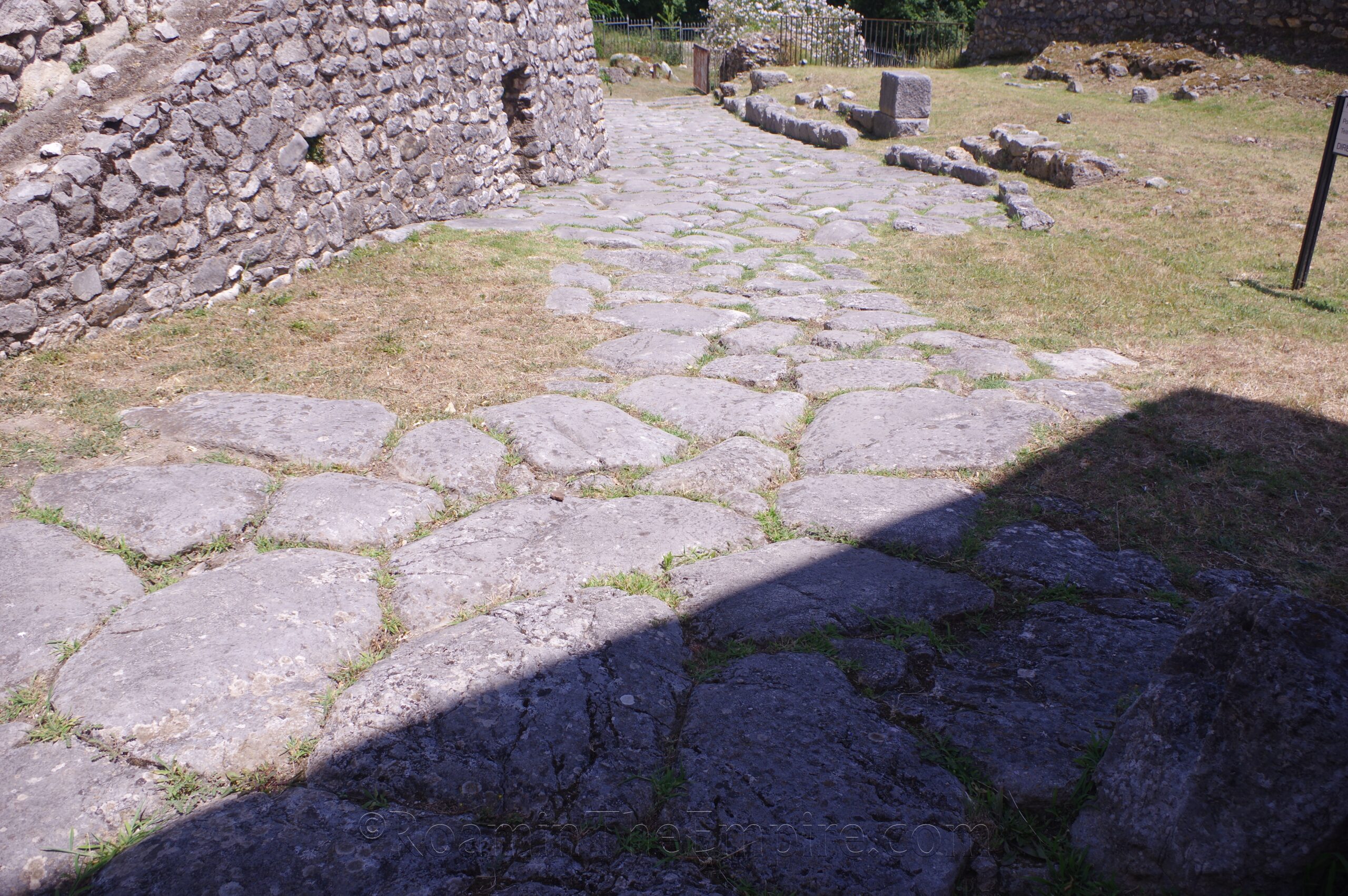
Continuing down from the lapidary collection, the path is replaced by the original paving of the Via Latina. Just before the switchback, are the scant remains of the so-called Porta Campana. Really just a few foundation blocks of the gate; not particularly noticeable. The road turns to the southwest running along the remains of an ancient retaining wall. Cart ruts are visible in the basalt stones of the road as it makes its way downhill. The amphitheater is built partially into the slope of the hill below the road, which offers great views into the interior of the amphitheater. The amphitheater is accessible via a path a little farther on.
The amphitheater was constructed in the latter half of the 1st century CE. An inscription records that it was constructed, along with a temple, by Ummidia Quadratilla (the very same patron of the theater) with her own money for the citizens of Casinum. The temple which is referred to in the inscription has not yet been found. The amphitheater was located outside the walls of the city, again built abutting the slopes of Monte Cassino. The amphitheater is estimated to have had a capacity of about 4,500 spectators.
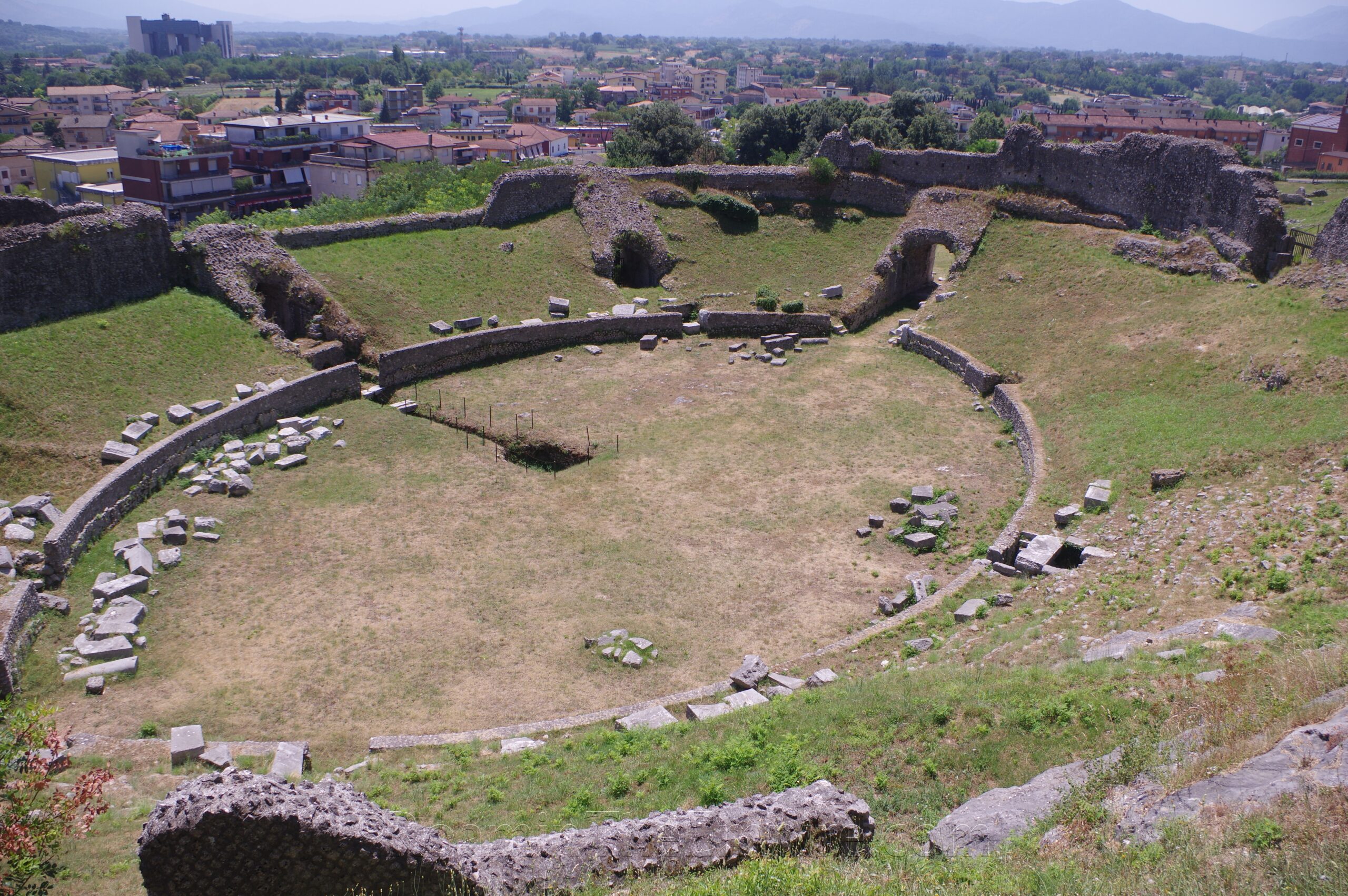
Most of the seating for the amphitheater has been removed in the intervening centuries, but significant sections of the freestanding walls and supports of the amphitheater remain. Part of the fossa bestiaria are excavated in the southeast part. Two of the three main entrances are intact and run along the northeast/southwest access, while a third was located, but is not visible, at the side of the amphitheater abutting the slope.
Continuing down the Via Latina to the bottom of the slope, it again switches back and remnants of the road continue to the east. Along the north side of the road are some fairly significant remains of a tomb. A few other scant remains of additional tombs and funerary elements are visible scattered around the area beyond this more significant tomb.

Heading back to the area where the path branches off toward the amphitheater, there is a staircase that leads back up the slope to an area southwest of the museum. Here is what is generally accepted as the mausoleum of Ummidia Quadratila, the previously mentioned patron of both the theater and the amphitheater. Ummidia was the daughter of Gaius Ummidius Durmius Quadratus, who served variously as governor of Lusitania, Cyprus, and Syria. He also may have been a consul suffectus in 38 or 39 CE and seems to have been the original patron of the theater. Ummidia’s death during the reign of Trajan at the age of 79 is recorded in a letter to Titus Prifernius Geminus by Pliny the Younger, who was a friend of her grandson, Ummidius Quadratus. The letter records that her grandson was the benefactor of 2/3 of her estate.
The mausoleum was located within the city walls, an unusual occurrence and a testament to the importance of Ummidia at Casinum. The monument was originally two levels, though only the lower level has been preserved. It is not particularly impressive from the outside, but the vaulted interior of the hypogeum, constructed in large stone blocks, is well preserved. This is perhaps due to the use of the mausoleum as a church starting in the 11th century CE.
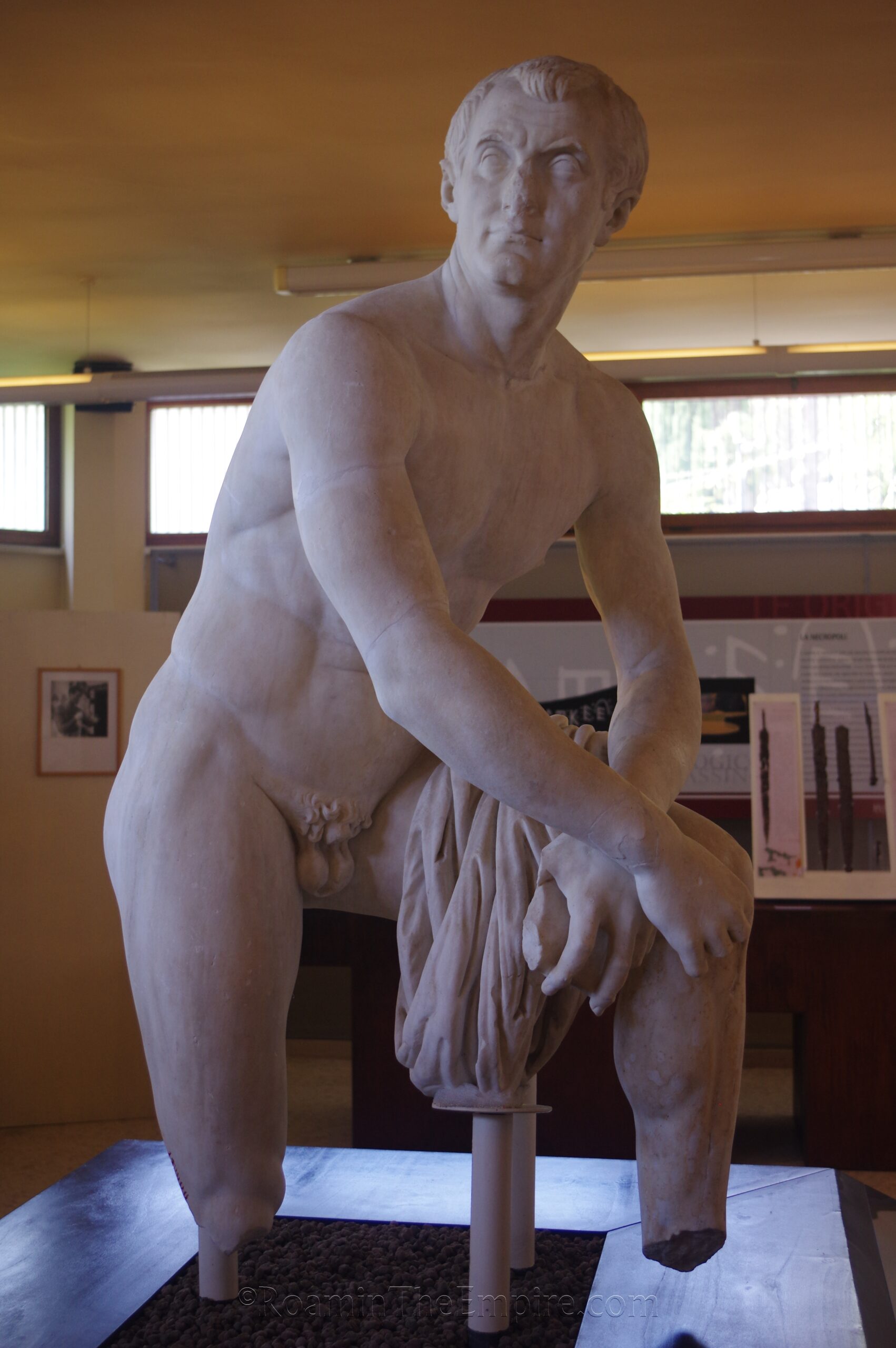
Returning to the entrance area, one can visit the Museo Archeologico Nazionale Gianfilippo Carettoni. The museum is rather small, but there are a few really standout pieces. One is a relatively complete Pentelic marble statue of an athlete dated to the late 1st century BCE. Another is the deliberately folded sword inscribed with the name of its maker, perhaps a gift to a mercenary from the Samnite Wars. The remnants of the ivory decoration from a 1st century BCE funerary bed are also particularly interesting. Aside from those things, the museum has other fragments of statues, architectural elements, and inscriptions, including the inscription recording Ummidia Quadratus’ reconstruction of the theater.
Again, it’s a relatively small museum and took me about half an hour to go through. The archaeological site isn’t particularly extensive either, and in all it was less than an hour and a half stop. The archaeological area had a few signs in English and Italian for the Porta Campana, amphitheater, and mausoleum. Most of the artifacts in the museum had English and Italian information as well
Sources:
Livy. Ab Urbe Condita, 22.13, 26.9, 27.23
Pliny the Elder. Epistulae, 7.24.
Plutarch. Fabius Maximus, 6.1.
Sick, David H. Ummidia Quadratilla: Cagey Businesswoman or Lazy Pantomime Watcher? Classical Antiquity, Vol. 18, No. 2 (October 1999), pp. 330-348.
Smith, William. Dictionary of Greek and Roman Geography. Walton & Murray, 1870.
Stillwell, Richard, William L. MacDonald, and Marian Holland. McAllister. The Princeton Encyclopedia of Classical Sites. Princeton, NJ: Princeton U Press, 1976.
Strabo. Geographica, 5.3.9.
Sturgeon, Mary C. “Dedications of Roman Theaters,” Hesperia Supplements, Vol. 33 (2004), pp. 411-429.
Varro. De Lingua Latina, 7.29.
Varro. De Re Rustica, 3.3.5, 3.4.2, 3.5.8.


